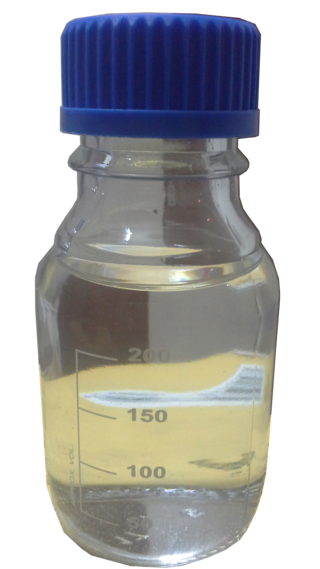This article needs more reliable medical references for verification or relies too heavily on primary sources .(November 2010) |  |
The CRAM diet (cereal, rice, applesauce, and milk) is a short term dietary treatment for diarrhea and gastroenteritis.
This article needs more reliable medical references for verification or relies too heavily on primary sources .(November 2010) |  |
The CRAM diet (cereal, rice, applesauce, and milk) is a short term dietary treatment for diarrhea and gastroenteritis.
The use of cereals, rice and milk as a stop-gap eating plan for stomach upset has been validated as a more effective remedy to manage diarrhea than the BRAT diet by recent[ when? ] research in hospitals in South America and Asia.[ citation needed ]
According to John Snyder, M.D., professor of pediatrics at the University of California at San Francisco Medical Center and a member of the American Academy of Pediatrics subcommittee on treating acute diarrhea:
Not only does the CRAM diet seem to ease the diarrhea symptoms faster, but the milk gives the child more complete protein and needed fat, which is lacking in the BRAT diet.
Due to severe dehydration caused by both diarrhea and gastroenteritis, the CRAM eating plan should be combined with oral rehydration therapy through the administration of liquids (e.g. Gatorade, Pedialyte) or food-based fluids (such as broth or gruels) to replace loss of fluids.
According to Snyder, it is essential to combine the CRAM diet with an electrolyte-replacement drink. Immediate medical attention is necessary if the diarrhea symptoms remain severe or if the child exhibits symptoms of dehydration, such as dry mouth, lack of urination, listlessness, or rapid heart rate.[ citation needed ]
An alternative to the CRAM diet is the BRAT diet, which consists of bananas, rice, applesauce, and toast; variations include the BRATT diet, which consists of bananas, rice, applesauce, toast, and tea, and the BRATTY diet which consists of bananas, rice, applesauce, toast, tea, and yogurt.
The CRAM diet has more complete protein and fat content than the BRAT diet. [1]

Apple sauce is a purée made of apples. It can be made with peeled or unpeeled apples and can be spiced or sweetened. Apple sauce is inexpensive and is widely consumed in North America and some parts of Europe.

Diarrhea, also spelled diarrhoea or diarrhœa, is the condition of having at least three loose, liquid, or watery bowel movements in a day. It often lasts for a few days and can result in dehydration due to fluid loss. Signs of dehydration often begin with loss of the normal stretchiness of the skin and irritable behaviour. This can progress to decreased urination, loss of skin color, a fast heart rate, and a decrease in responsiveness as it becomes more severe. Loose but non-watery stools in babies who are exclusively breastfed, however, are normal.

A stomach rumble, also known as a bowel sound, peristaltic sound, abdominal sound, bubble gut or borborygmus, is a rumbling, growling or gurgling noise produced by movement of the contents of the gastrointestinal tract as they are propelled through the small intestine by a series of muscle contractions called peristalsis. A trained healthcare provider can listen to these intestinal noises with a stethoscope, but they may be audible enough to be heard with the naked ear as the fluid and gas move forward in the intestines. The lack of bowel sounds is indicative of ileus, intestinal obstruction, or some other serious pathology.

Enteritis is inflammation of the small intestine. It is most commonly caused by food or drink contaminated with pathogenic microbes, such as Serratia, but may have other causes such as NSAIDs, radiation therapy as well as autoimmune conditions like coeliac disease. Symptoms include abdominal pain, cramping, diarrhoea, dehydration, and fever. Related diseases of the gastrointestinal system involve inflammation of the stomach and large intestine.

Gastroenteritis, also known as infectious diarrhea, is an inflammation of the gastrointestinal tract including the stomach and intestine. Symptoms may include diarrhea, vomiting, and abdominal pain. Fever, lack of energy, and dehydration may also occur. This typically lasts less than two weeks. Although it is not related to influenza, in the U.S. and U.K., it is sometimes called the "stomach flu".

Baby food is any soft, easily consumed food other than breastmilk or infant formula that is made specifically for human babies between six months and two years old. The food comes in many varieties and flavors that are purchased ready-made from producers, or it may be table food eaten by the family that has been mashed or otherwise broken down.

Special K is an American brand of breakfast cereal and meal bars originally manufactured by Kellogg's. The cereal was introduced to the United States in 1955. It is made primarily from grains such as lightly toasted rice, wheat and barley. Special K used to be marketed primarily as a low-fat cereal that can be eaten to help one lose weight. Following the 2023 spinoff of Kellogg's North American cereal division, the cereal is manufactured by WK Kellogg Co for the United States, Canada, and Caribbean markets. The former Kellogg's, renamed Kellanova, continues to manufacture the cereal for the rest of the world and the meal bars for all markets.

Electrolyte imbalance, or water-electrolyte imbalance, is an abnormality in the concentration of electrolytes in the body. Electrolytes play a vital role in maintaining homeostasis in the body. They help to regulate heart and neurological function, fluid balance, oxygen delivery, acid–base balance and much more. Electrolyte imbalances can develop by consuming too little or too much electrolyte as well as excreting too little or too much electrolyte. Examples of electrolytes include calcium, chloride, magnesium, phosphate, potassium, and sodium.

Oral rehydration therapy (ORT) is a type of fluid replacement used to prevent and treat dehydration, especially due to diarrhea. It involves drinking water with modest amounts of sugar and salts, specifically sodium and potassium. Oral rehydration therapy can also be given by a nasogastric tube. Therapy can include the use of zinc supplements to reduce the duration of diarrhea in infants and children under the age of 5. Use of oral rehydration therapy has been estimated to decrease the risk of death from diarrhea by up to 93%.

The BRAT diet is a restrictive diet that was once recommended for people, particularly children, with gastrointestinal distress like vomiting, diarrhea, or gastroenteritis. Evidence, however, does not support a benefit. As of the 21st century, it is no longer recommended, as it is unnecessarily restrictive. The diet was first discussed in 1926.
A mechanical soft diet or edentulous diet, or soft food(s) diet, is a diet that involves only foods that are physically soft, with the goal of reducing or eliminating the need to chew the food. It is recommended for people who have difficulty chewing food, including people with some types of dysphagia, the loss of many or all teeth, pain from recently adjusted dental braces, or surgery involving the jaw, mouth, or gastrointestinal tract.

William Joseph Cobb, best known by his ring and screen names of Happy Humphrey, Happy Farmer Humphrey, and "Squasher" Humphrey, was an American professional wrestler, known as the heaviest professional wrestler of all time. His most active period was in the 1950s and 1960s when he billed himself as "the world's largest wrestler". Humphrey averaged 750 lb (340 kg) during his career. Several times, he weighed in at over 800 lb (360 kg), and on one occasion he weighed over 900 lb (410 kg).
Gastroenterocolitis is a condition characterized by inflammation of the stomach, small intestines, and colon.
A bland diet is a diet consisting of foods that are generally soft, low in dietary fiber, cooked rather than raw, and not spicy. It is an eating plan that emphasizes foods that are easy to digest. It is commonly recommended for people recovering from surgery or conditions affecting the gastrointestinal tract.
Chronic diarrheaof infancy, also called toddler's diarrhea, is a common condition typically affecting up to 1.7 billion children between ages 6–30 months worldwide every year, usually resolving by age 4. According to the World Health Organization (WHO), diarrheal disease is the second greatest cause of death in children 5 years and younger. Diarrheal disease takes the lives of 525,000 or more children per year. Diarrhea is characterized as the condition of passing of three or more loose or watery bowel movements within a day sometimes with undigested food visible. Diarrhea is separated into three clinical categories; acute diarrhea may last multiple hours or days, acute bloody diarrhea, also known as dysentery, and finally, chronic or persistent diarrhea which lasts 2–4 weeks or more. There is normal growth with no evidence of malnutrition in the child experiencing persistent diarrhea. In chronic diarrhea there is no evidence of blood in the stool and there is no sign of infection. The condition may be related to irritable bowel syndrome. There are various tests that can be performed to rule out other causes of diarrhea that don't fall under the chronic criteria, including blood test, colonoscopy, and even genetic testing. Most acute or severe cases of diarrhea have treatment guidelines revolving around prescription or non prescription medications based on the cause, but the treatment protocols for chronic diarrhea focus on replenishing the body with lost fluids and electrolytes, because there typically isn't a treatable cause.

Chadian cuisine is the cooking traditions, practices, foods and dishes associated with the Republic of Chad. Chadians use a medium variety of grains, vegetables, fruits and meats. Commonly consumed grains include millet, sorghum, and rice as staple foods. Commonly eaten vegetables include okra and cassava. A variety of fruits are also eaten. Meats include mutton, chicken, pork, goat, fish, lamb and beef. The day's main meal is typically consumed in the evening on a large communal plate, with men and women usually eating in separate areas. This meal is typically served on the ground upon a mat, with people sitting and eating around it.
Food protein-induced enterocolitis syndrome (FPIES) is a systemic, non IgE-mediated response to a specific trigger within food – most likely food protein. FPIES presents in two different forms: an acute form and a chronic form. In its acute form, FPIES presents with vomiting that usually begins 1 to 4 hours after trigger food ingestion. Vomiting is often followed by a paleness to the skin, lethargy, and potentially watery, perhaps blood-tinged diarrhea. In the severe form of acute FPIES, a person will vomit until dehydration and until a shock-like state, which occurs in 15% of patients. In its chronic form, which can be difficult to diagnose until a person has already met diagnostic criteria for acute FPIES, after repeated or regular ingestion of the trigger food, the person presents with chronic or episodic vomiting, failure to thrive, and watery, perhaps blood-tinged diarrhea. FPIES can potentially develop at any age but seems most commonly to develop within the first few years of life. FPIES has mainly been documented in young infants, but can exist in older children and adults. Some people develop both FPIES and an IgE-mediated type of reaction to the same food, and having FPIES can increase a person's risk of also developing IgE-mediated food allergies.
Tea and toast syndrome is a form of malnutrition commonly experienced by elderly people who are unable to prepare meals and tend to themselves. The term is not intrinsic to tea or bread products only; rather, it describes limited dietary patterns which lead to reduced calories resulting in a deficiency of vitamins and other nutrients. This can contribute to a gradual loss of wellness and muscle due to poor protein intake. In elderly individuals with a low GFR, the syndrome may manifest itself as hyponatremia, a low concentration of the electrolyte sodium in the bloodstream. This is attributed to drinking a large amount of water while consuming a diet poor in salt and protein. Hyponatremia can lead to various neurological problems ranging from headaches and a decreased ability to think, to seizures and coma in the most severe cases.
Toddler nutrition is the description of the dietary needs of toddlers aged one to two years old. Food provides the energy and nutrients that toddlers need to be healthy. An adequate intake in nutrient rich food is good nutrition. A diet lacking essential calories, minerals, fluid and vitamins could be considered 'bad' nutrition. Nutrition needs are different for toddlers. For a baby, breast milk is "best" and it has all the necessary vitamins and minerals. Toddlers typically have been weaned from breast milk and infant formula. Though infants usually start eating solid foods between 4 and 6 months of age, more and more solid foods are consumed by a growing toddler. If a food introduced one at a time, a potential allergen can be identified. Food provides the energy and nutrients that young children need to be healthy. Toddlers are learning to feed themselves and to eat new foods. They should eat a variety of foods from all the food groups. Each day, toddlers need enough nutrients, including
Breakfast, the first meal of the day eaten after waking from the night's sleep, varies in composition and tradition across the world.